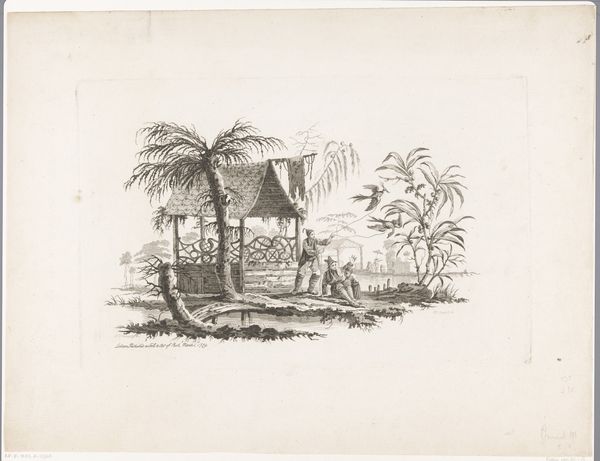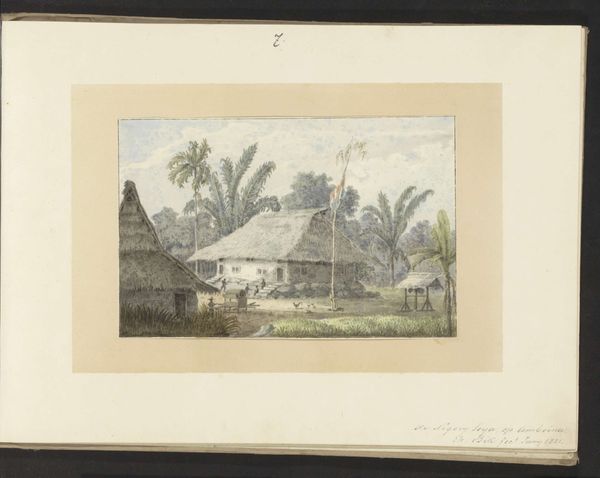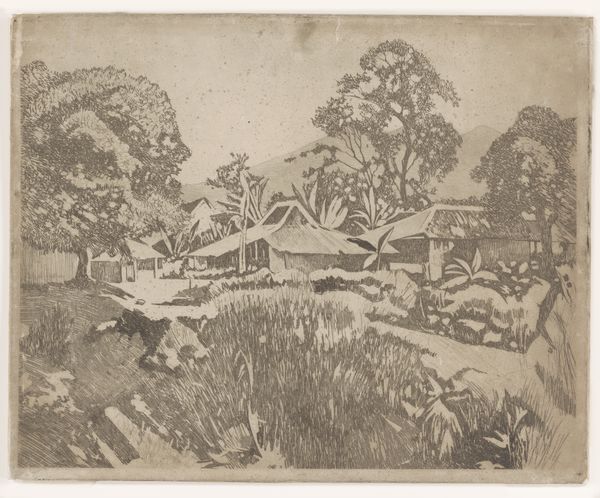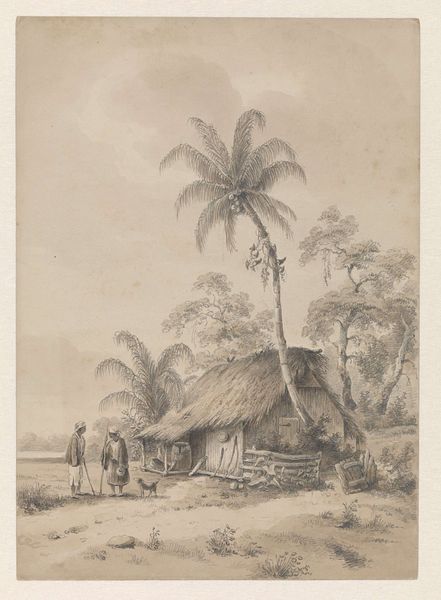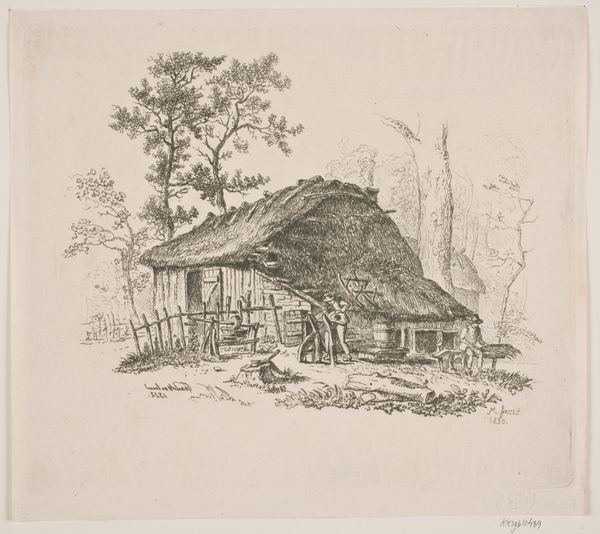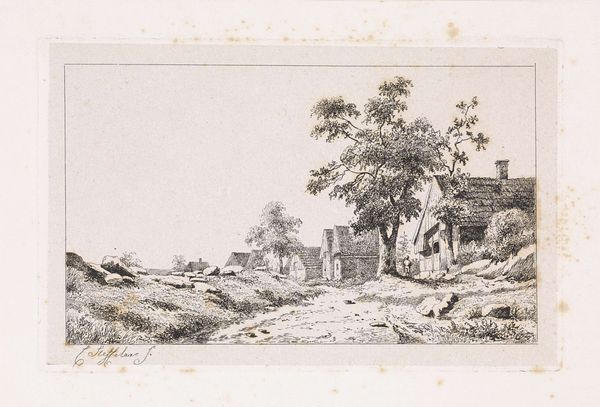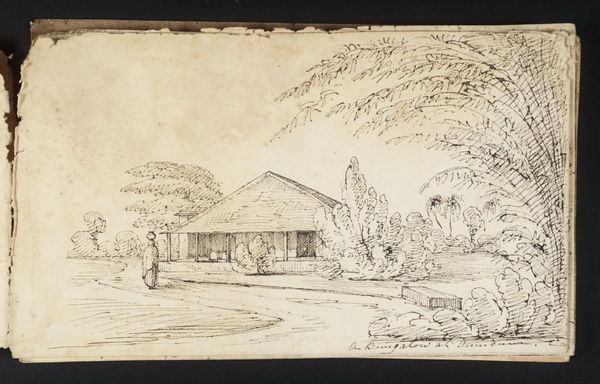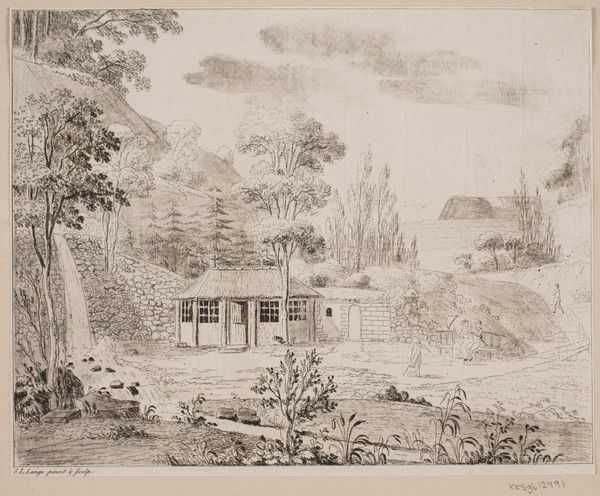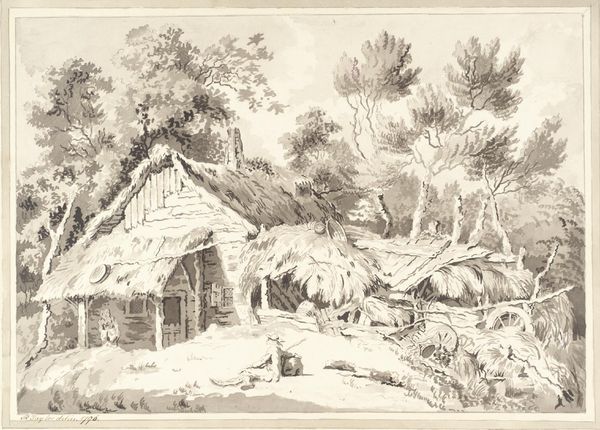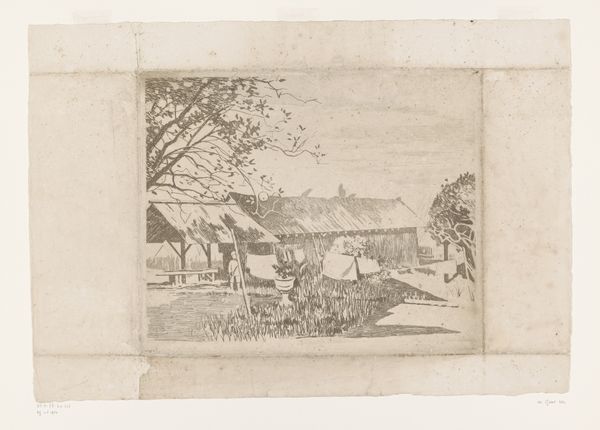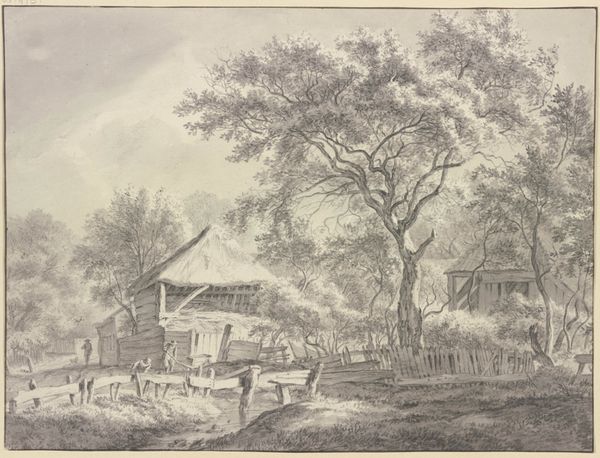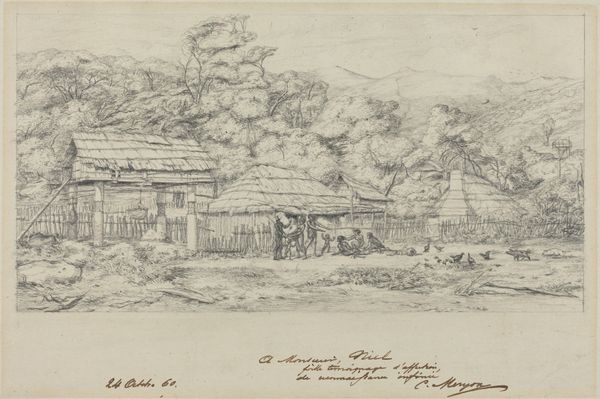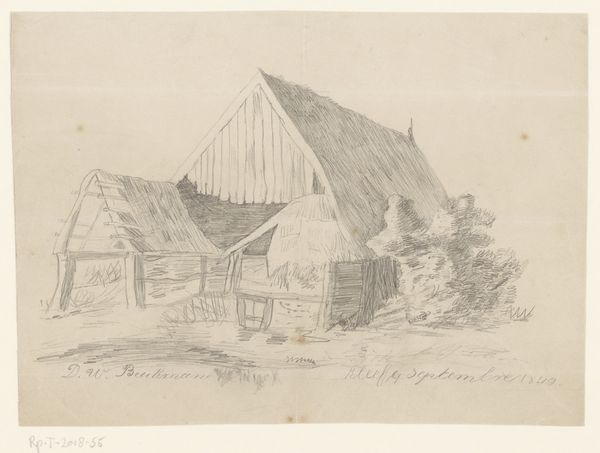
drawing, pencil
#
drawing
#
landscape
#
pencil
#
orientalism
Dimensions: height 148 mm, width 210 mm
Copyright: Rijks Museum: Open Domain
Curator: Ah, a quiet moment captured in Jannes Theodorus Bik's 1840 pencil drawing, "Dorpshuis met paard, regentschap Bandung, West-Java"—Village house with horse, Bandung Regency, West Java. The scene gives such a serene sense. Editor: It does have a stillness. Immediately, I'm drawn to the textural contrast—the thatched roof of the house against the smooth skin of the horse, and the hazy outlines of the trees. The materiality of the thatched roof must have been something so tactile for the inhabitants. Curator: Indeed, that thatched roof, constructed with what looks like local materials, would certainly hold meaning for those familiar with these structures. It speaks to a time and place but I wonder what stories this image was intended to communicate at the time it was made. Editor: Possibly ones of colonial authority, conveyed through landscape depictions of its domains. You see this attention to the house's construction: the weaving, the joining of materials. I see labour reflected in every line drawn. Curator: And I see an intimate look at a colonial outpost. Look at the lone figure walking. They seem almost ghostlike. And the horse stands patiently. Could this represent a traveller on horseback arriving, perhaps signifying the start of a new phase or journey? What is he travelling for and what stories does he bring to the landscape? Editor: Or consider the embodied labour of tending to that animal. What about the making of paper and the availability of graphite? I wonder about access to these imported materials and who commissioned this image to begin with? Curator: Excellent point! This scene of Bandung is so interesting, it is less about the materials and more about its resonance. This artwork holds elements of Romanticism as well as Orientalism through its landscape portrayal of a remote village life, something that still lingers with us today. Editor: Seeing it like this underscores for me that materials always have a social life: pencil from Europe to colonial Java, depicting an ostensibly humble dwelling and its landscape. The artwork as commodity meets the lives and labor of individuals represented within it. I find that thought compelling. Curator: Fascinating how we've woven materiality and symbolism today, I must say. Editor: I agree, looking at it now has left me quite contemplative.
Comments
No comments
Be the first to comment and join the conversation on the ultimate creative platform.
